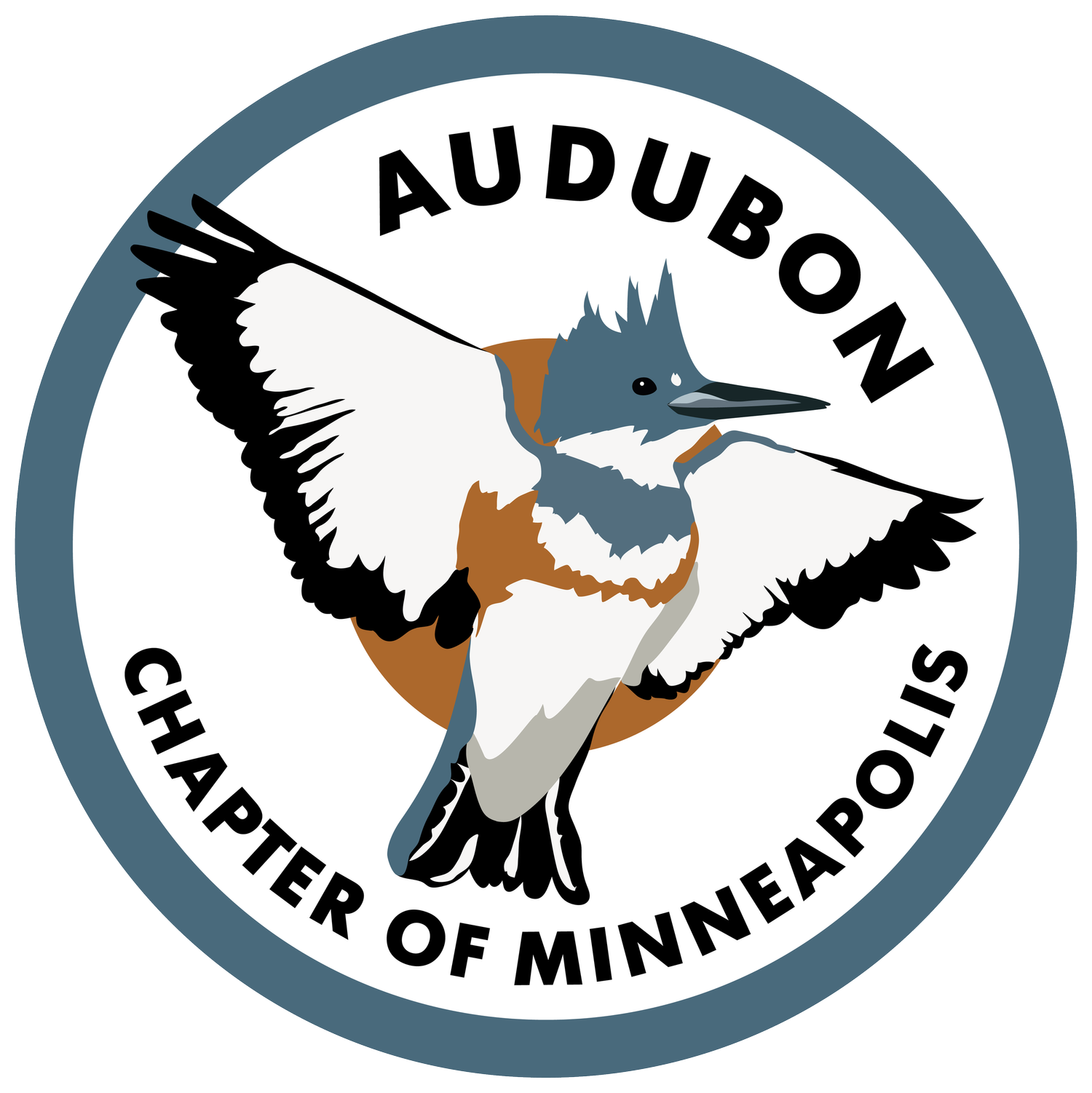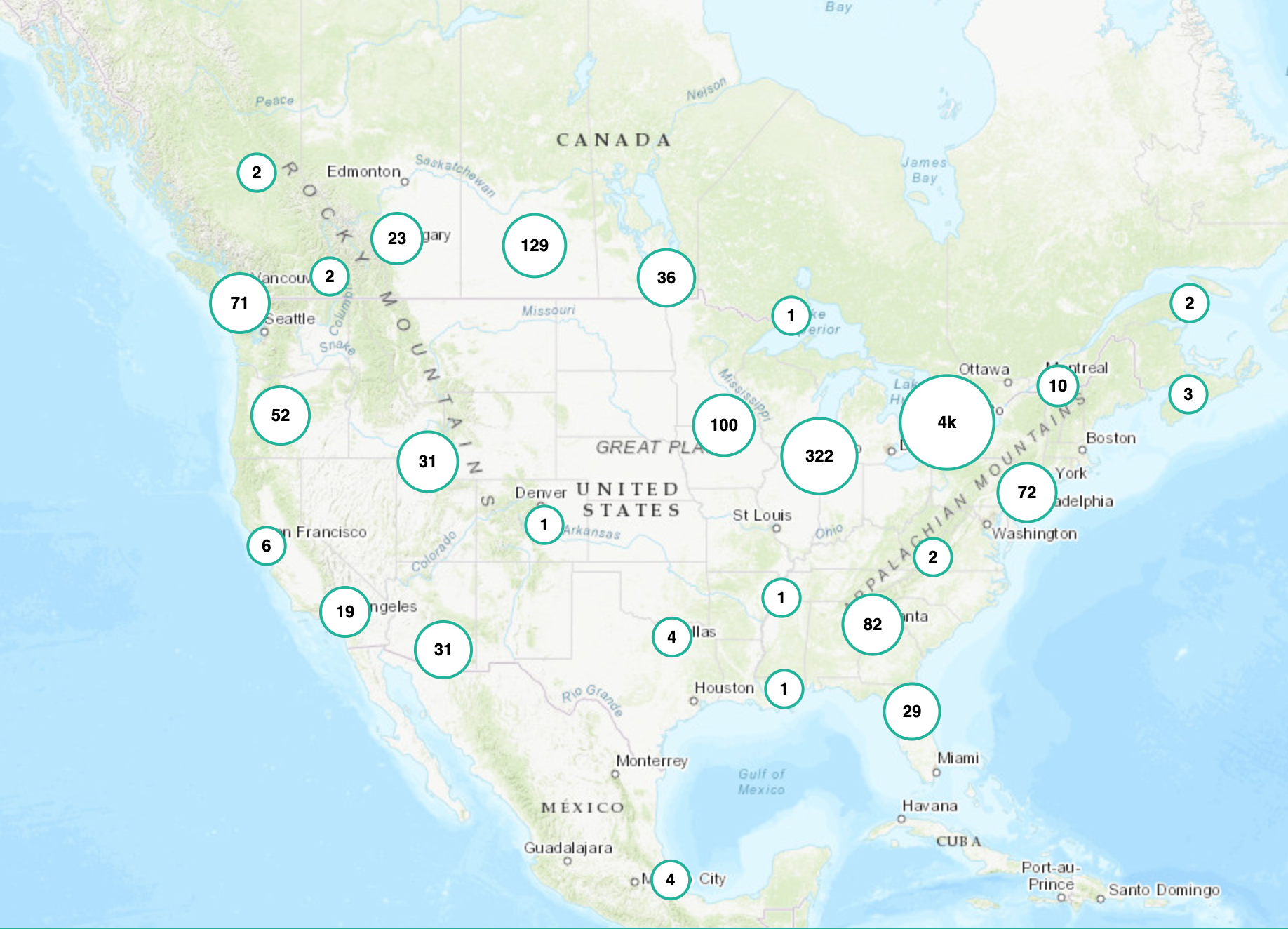The Sad, Powerful Science of Global Bird Collision Mapping
Citizen scientists document bird deaths from window strikes for data-driven advocacy.
Collisions with building windows is the 2nd largest mortality risk to migratory birds, yet local governments lag in implementing bird-safe standards for new and existing structures. In an effort to collect data, rescue injured birds, and increase visibility on the issue, hundreds of citizen scientists around the world participated in the annual effort to monitor and document birds who collided with buildings during fall migration.
U.S. Bank Stadium Source: Audubon Chapter of Minneapolis
From September 27th through October 3rd, community scientists, including in the Twin Cities, worked alone and in teams, walking routes near buildings downtown and other areas. When a volunteer finds a deceased or injured window strike victim, they take a photo, upload it to Global Bird Collision Mapper, enter the address of where the bird was found, and identify the species where possible, depending on the condition of the body. Live, injured birds needing care are safely contained and delivered to licensed wildlife rehabilitators.
An image from the Global Bird Collision Mapper app. You can explore the data and enter locations to search for recorded collisions in specific sites. Image credit: https://birdmapper.org/app/
Professional scientists and bird advocates will analyze the data citizen scientists collected for longitudinal research on bird mortality, as well as for advocacy efforts to inspire responsible governance of our urban environments through policy, legislation, building code, and ordinance development. Through monitoring efforts, advocates are able to quantify risks to building owners and policymakers, and advise on plans to target retrofits on existing buildings’ most dangerous windows.
Image credit: @MelissaBreyer via Twitter
While walking her 6 block route downtown, ACM Vice Chair Amy Simso Dean found 11 dead birds and 2 injured birds, which she took to the Wildlife Rehabilitation Center of Minnesota. At the time of this writing, Global Bird Collision Mapper had 69,087 total collisions entered for fall 2021. Of course, all data collected and analyzed will likely result in an undercount of fatalities resulting from poorly designed urban environments-birds may fall onto high terraces, planters, or window sills, be swept away by maintenance crews, or scavenged by other animals.
Audubon Chapter of Minneapolis Amy Simso Dean records species and location information of a window strike victim in downtown Minneapolis. Image credit: Marian Weidner
An estimated 365-988 million birds die from building collisions in the U.S. each year; however, these deaths are largely preventable. With roughly 44% of collisions taking place at residences, making your own home bird-safe can have a direct, positive impact on birds. While bird migration is a global phenomenon, making the built environment safer for birds is a local issue. Residents can encourage citywide participation in the Lights Out Twin Cities program and urge city and state-level officials to pass legislation requiring builders to utilize the array of available materials and designs that minimize risks to birds.
Screenshot of the Bakken Museum website. Image credit: thebakken.org/renovation
In addition to retrofitting your home’s windows and engaging with local officials, there are other ways to help birds:
Share your story: Do you have stories about birds you have rescued after they have collided with glass? Have you made your windows bird-safe? Share photos from a rescue or before and after images of your bird-safe windows using #GlobalBirdRescue on Facebook, Twitter and Instagram.
Engage the building managers where you work/study in bird safety: Does the building where you work or go to school have one or more collisions logged in the global bird collision mapper? Have you ever found a dead bird outside the building? Does it have highly reflective windows? Building owners, managers, and employees can save birds and energy by turning off unnecessary lights during spring and fall migration. They can also connect with Fatal Light Awareness Program (FLAP) for resources on how to make windows and campuses safer for birds.
Participate in citizen science initiatives like Global Bird Rescue (GBR). Every year at the beginning of October, GBR participants are encouraged to search their communities for bird collisions and document these encounters.
Marian Weidner is an Audubon Chapter of Minneapolis board member.





